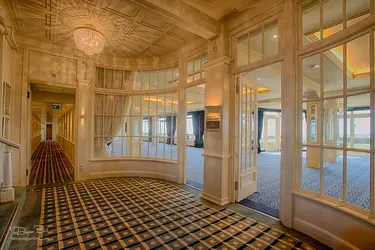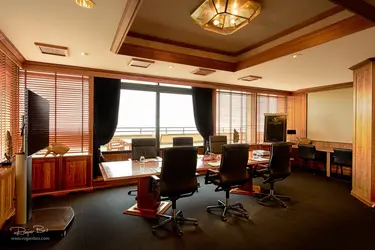Rogierbos
TPF Noob!
- Joined
- May 6, 2013
- Messages
- 2
- Reaction score
- 2
- Location
- Netherlands
- Can others edit my Photos
- Photos OK to edit
Hi,
I recently completed an assignment in which I had to use quite a bit of HDR. I thought my HDR skills were OK, but this assignment proved to be very challenging. I was asked to photograph a 5 star hotel here in Holland, which is situated right on the beach. The management of the hotel really wanted to see the beach and the sea through the large windows, but the different in light between inside and outside was huge - sometimes as much as 7 or 8 stops.
I want to show you some of my images (below) and ask you how I might have done better. A larger web gallery can be found here:
Huis Ter Duin
My workflow:
Photography with Nikon D800, Raw, on tripod. Sometimes 3 images 1 stop apart, sometimes 5, sometimes 7. Triggered with remote.
Images in to Lightroom (Apple Mac pro). HDR created with JPG's in Nik HDR Efex Pro 2 (first images), later with Photomatix (usually tonemapped). Export as Tiff to Photoshop CS6 for final edits (luminosity masks, removal of smoke detectors, etc.
I am relatively OK with the images in this gallery, but not very enthusiastic. I find the images quite grungy, the colours a little garish... I find there is still too much blown out detail, too much light flare...
I'm wondering how I could have done better. The photo editing took tons more time than I had budgetted already. I wonder if I should have used large lights more (I did for some of the images), but that slows me down even more during the shoot (I work alone).
Any comments you have are very welcome!







I recently completed an assignment in which I had to use quite a bit of HDR. I thought my HDR skills were OK, but this assignment proved to be very challenging. I was asked to photograph a 5 star hotel here in Holland, which is situated right on the beach. The management of the hotel really wanted to see the beach and the sea through the large windows, but the different in light between inside and outside was huge - sometimes as much as 7 or 8 stops.
I want to show you some of my images (below) and ask you how I might have done better. A larger web gallery can be found here:
Huis Ter Duin
My workflow:
Photography with Nikon D800, Raw, on tripod. Sometimes 3 images 1 stop apart, sometimes 5, sometimes 7. Triggered with remote.
Images in to Lightroom (Apple Mac pro). HDR created with JPG's in Nik HDR Efex Pro 2 (first images), later with Photomatix (usually tonemapped). Export as Tiff to Photoshop CS6 for final edits (luminosity masks, removal of smoke detectors, etc.
I am relatively OK with the images in this gallery, but not very enthusiastic. I find the images quite grungy, the colours a little garish... I find there is still too much blown out detail, too much light flare...
I'm wondering how I could have done better. The photo editing took tons more time than I had budgetted already. I wonder if I should have used large lights more (I did for some of the images), but that slows me down even more during the shoot (I work alone).
Any comments you have are very welcome!











![[No title]](/data/xfmg/thumbnail/32/32929-22e23acc63d6ecb25e5ee941be87121f.jpg?1734162700)
![[No title]](/data/xfmg/thumbnail/33/33436-1304fb294d2141a65ae8309383a3e52a.jpg?1734163466)




![[No title]](/data/xfmg/thumbnail/40/40301-fa48a5125a6849a0a400dff1599c4b30.jpg?1734174710)


